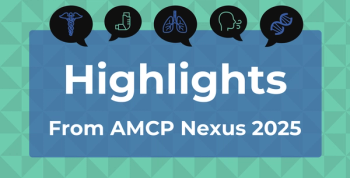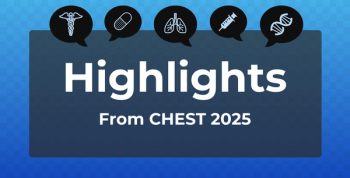
5 Consequences If ACA Premium Subsidies End in 2026
Key Takeaways
- Expiration of subsidies could double premiums for marketplace enrollees, disproportionately affecting older adults and leading to adverse selection.
- Up to 4 million people may lose coverage, increasing uninsured rates, especially in non-Medicaid expansion states and among vulnerable communities.
As open enrollment begins November 1, 2025, millions are signing up under enhanced subsidies that are set to expire at the end of this year.
The enhanced premium tax credits introduced under the American Rescue Plan Act and extended by the Inflation Reduction Act have played a pivotal role in keeping health insurance affordable for millions of Americans. These subsidies reduced average premium payments by more than 50% for marketplace enrollees and helped drive record enrollment in 2024, according to KFF.1 However, the Congressional Budget Office (CBO) projects that if these subsidies expire in January 2026, premiums could rise substantially, and up to 4 million people could lose coverage.2
Without congressional action, the managed care landscape may face widespread disruption—impacting not only affordability and access but also the financial stability of health systems and insurers.3
Here are 5 things that could happen if Affordable Care Act (ACA) subsidies are not extended at the end of this year.
1. Higher Premiums Across the Marketplace
The most immediate consequence of letting ACA subsidies expire would be higher premiums for millions of Americans who purchase coverage on the marketplace.1 The enhanced subsidies currently limit premium payments to no more than 8.5% of an enrollee’s household income. Without this cap, many middle-income families could see their monthly costs more than double. KFF analysis shows that in 2026, a 40-year-old earning $50,000 a year could pay roughly $2000 more annually for a benchmark silver plan. Older adults, particularly those nearing retirement but not yet eligible for Medicare, would be disproportionately affected, as premiums rise sharply with age. Higher costs could push healthier individuals to drop coverage, creating adverse selection that drives prices up even further for those who remain.2 This market destabilization could ripple across insurers and consumers alike, threatening the affordability gains achieved over the past several years.
2. Increased Uninsured Population
The expiration of enhanced subsidies could reverse recent progress in reducing the number of uninsured Americans.2 The CBO projects that roughly 4 million people would lose marketplace coverage if the current subsidy structure ended. Many of these individuals would fall into a gap—earning too much to qualify for Medicaid but unable to afford full-priced premiums. Without affordable coverage options, people are more likely to delay or avoid medical care, leading to preventable hospitalizations and worse health outcomes.4 KFF estimates that every state could see a rise in uninsured rates, with the largest increases expected in states that have not expanded Medicaid. Rural areas and communities of color, which already face barriers to accessing care, could be disproportionately affected.5 Rising uninsurance rates would also create additional financial pressure on hospitals, community clinics, and public health programs that serve as safety nets for those without coverage.
3. Loss of Eligibility For Some Enrollees
When the IRA temporarily expanded ACA subsidies, it removed the so-called “subsidy cliff,” ensuring that households earning more than 400% of the federal poverty level still received financial assistance if premiums exceeded 8.5% of their income. But when the subsidies expire, that protection will disappear.1,6 Many middle-income earners—especially older adults and small business owners—could suddenly lose eligibility for any premium assistance.6 In high-cost states, this loss could mean premiums exceeding $1000 per month for some families. For older adults not yet eligible for Medicare, or individuals living in areas with limited insurer competition, the financial strain could make coverage unaffordable. The return of the subsidy cliff would likely lead to “coverage churn,” where individuals cycle in and out of insurance due to fluctuating income. This instability not only undermines continuity of care but also disrupts the broader insurance market by reducing the number of healthy, continuously insured individuals.
4. Increased Financial Hardship
Rising premiums and reduced eligibility would inevitably create financial strain for many households. Without subsidies, middle-income Americans—particularly those earning between $50,000 and $75,000 annually—would shoulder a much heavier share of their premium costs.1 KFF estimates that, without the enhanced tax credits, a 60-year-old earning $55,000 could pay 11% of their income on premiums alone, compared with 8.5% today. To lower their monthly costs, many consumers might switch to high-deductible or lower-tier plans, trading affordability for reduced coverage. This could lead to delayed care, skipped prescriptions, or reliance on emergency departments for preventable conditions.7 When individuals lose health insurance, total health spending decreases not because care becomes cheaper, but because people simply use less care—often until conditions worsen.3 The resulting financial hardship and poorer health outcomes could compound across households, widening economic and health disparities.
5. Strain on Hospitals and Safety-Net Providers
As uninsured rates rise, hospitals and community providers will likely face increased uncompensated care burdens. Safety-net hospitals and rural facilities, already operating with narrow margins, could be particularly vulnerable. The loss of coverage among millions of Americans would mean fewer patients able to pay for services, leading to higher levels of bad debt and reduced financial stability.4 Hospitals might need to scale back services or postpone capital investments, limiting access in underserved areas. Meanwhile, community health centers could experience overwhelming demand. The strain could extend to public health programs and local governments that must absorb the cost of increased uncompensated care. Over time, these pressures may ripple into higher costs for privately insured patients, as providers attempt to offset losses through cost-shifting. The combined effect could exacerbate health inequities and threaten the viability of the nation’s safety-net infrastructure.
References
1. Ortaliza J, Cord A, McGough M, et al. Inflation Reduction Act health insurance subsidies: what is their impact and what would happen if they expire? KFF. July 26, 2024. Accessed October 31, 2025.
2. The effects of not extending the expanded premium tax credits for the number of uninsured people and the growth in premiums. Congressional Budget Office. December 5, 2024. Accessed October 31, 2025.
3. Buetttgens M. What will happen to healthcare spending if the American Rescue Plan Act premium tax credits expire? Robert Wood Johnson Foundation. May 2022. Accessed October 31, 2025.
4. Burns A, Ortaliza J, Lo J, et al. How will the 2025 Reconciliation Law affect the uninsured rate in each state? KFF. August 20, 2025. Accessed October 31, 2025.
5. Hill L, Ndugga N, Artiga A, et al. Health coverage by race and ethnicity, 2010-2023. KFF. February 23, 2025. Accessed October 31, 2025.
6. Norris L. ‘Subsidy cliff’ will return in 2026 if Congress doesn’t act. HealthInsurance.org. October 22, 2025. Accessed October 31, 2025.
7. High-deductible health plans. National Pharmaceutical Council. Accessed October 31, 2025.
Newsletter
Stay ahead of policy, cost, and value—subscribe to AJMC for expert insights at the intersection of clinical care and health economics.













































